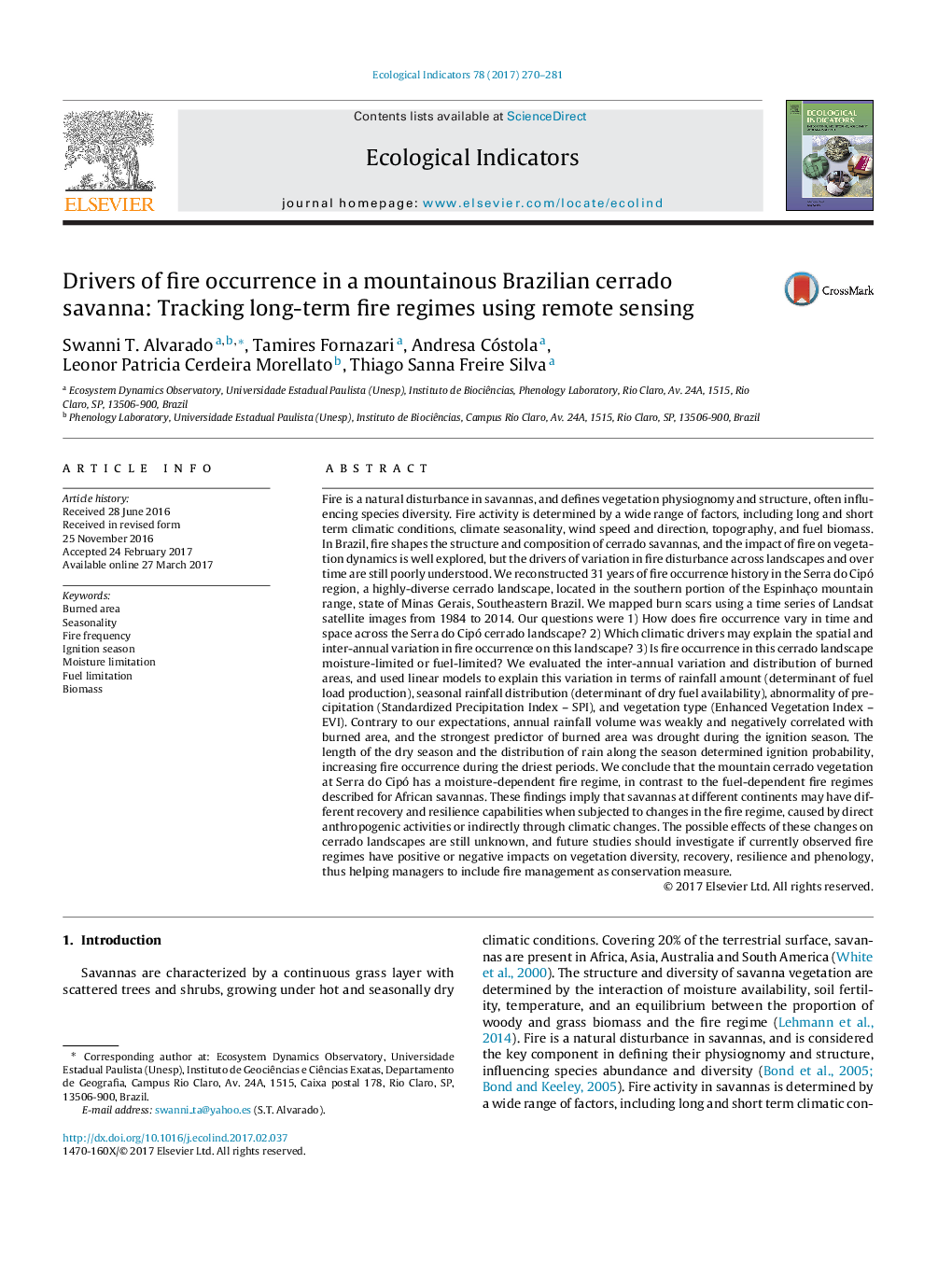| کد مقاله | کد نشریه | سال انتشار | مقاله انگلیسی | نسخه تمام متن |
|---|---|---|---|---|
| 5741635 | 1617124 | 2017 | 12 صفحه PDF | دانلود رایگان |
- We reconstructed 31 years of fire occurrence history in a Brazilian mountainous Savanna.
- We determined the drivers of temporal and spatial variation in fire occurrence.
- The strongest predictor of burned area was drought during the ignition season.
- Cerrado savannas appear to have moisture-dependent fire patterns.
- A proper management policy accounting for this is necessary for Cerrado protected areas.
Fire is a natural disturbance in savannas, and defines vegetation physiognomy and structure, often influencing species diversity. Fire activity is determined by a wide range of factors, including long and short term climatic conditions, climate seasonality, wind speed and direction, topography, and fuel biomass. In Brazil, fire shapes the structure and composition of cerrado savannas, and the impact of fire on vegetation dynamics is well explored, but the drivers of variation in fire disturbance across landscapes and over time are still poorly understood. We reconstructed 31 years of fire occurrence history in the Serra do Cipó region, a highly-diverse cerrado landscape, located in the southern portion of the Espinhaço mountain range, state of Minas Gerais, Southeastern Brazil. We mapped burn scars using a time series of Landsat satellite images from 1984 to 2014. Our questions were 1) How does fire occurrence vary in time and space across the Serra do Cipó cerrado landscape? 2) Which climatic drivers may explain the spatial and inter-annual variation in fire occurrence on this landscape? 3) Is fire occurrence in this cerrado landscape moisture-limited or fuel-limited? We evaluated the inter-annual variation and distribution of burned areas, and used linear models to explain this variation in terms of rainfall amount (determinant of fuel load production), seasonal rainfall distribution (determinant of dry fuel availability), abnormality of precipitation (Standardized Precipitation Index - SPI), and vegetation type (Enhanced Vegetation Index - EVI). Contrary to our expectations, annual rainfall volume was weakly and negatively correlated with burned area, and the strongest predictor of burned area was drought during the ignition season. The length of the dry season and the distribution of rain along the season determined ignition probability, increasing fire occurrence during the driest periods. We conclude that the mountain cerrado vegetation at Serra do Cipó has a moisture-dependent fire regime, in contrast to the fuel-dependent fire regimes described for African savannas. These findings imply that savannas at different continents may have different recovery and resilience capabilities when subjected to changes in the fire regime, caused by direct anthropogenic activities or indirectly through climatic changes. The possible effects of these changes on cerrado landscapes are still unknown, and future studies should investigate if currently observed fire regimes have positive or negative impacts on vegetation diversity, recovery, resilience and phenology, thus helping managers to include fire management as conservation measure.
Journal: Ecological Indicators - Volume 78, July 2017, Pages 270-281
